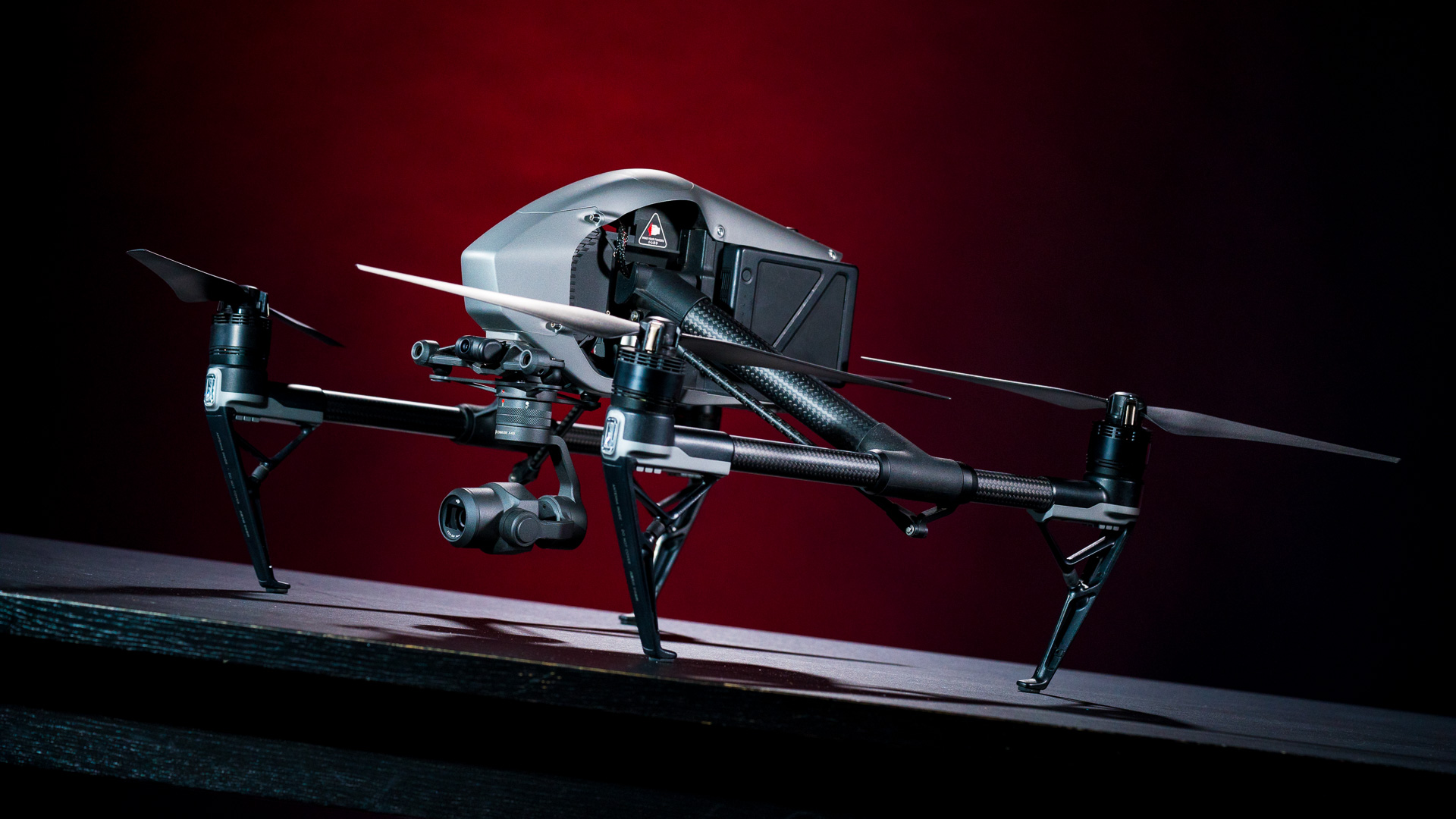

I’ve managed to get my hands on plenty of drones around here, and a fair share of them from DJI. They’ve all been consumer models, and more or less something I could see myself using for fun and creating amateur content. The amateur drone pilot demographic is the bulk of the pilot cohort out there, so these are naturally the most popular models on the market. As such I wouldn’t have thought last November during the DJI press event launch that I would land an Inspire 2 professional drone in my hands; the alleged pinnacle of drone videographic quality.
Considering the cost alone of this thing ($3,600-$6,200), I was surprised when one finally showed up at the office, in an oversized hard black Styrofoam case. I stared at the case for a minute, thinking that it looked like something a Die Hard villain would be transporting an arsenal in. I’d seen the Inspire 2 in action, but still for a brief moment before opening the case to reveal the drone I wondered if it would all be worth it; the hype, the price tag, the media praise.
Show & go
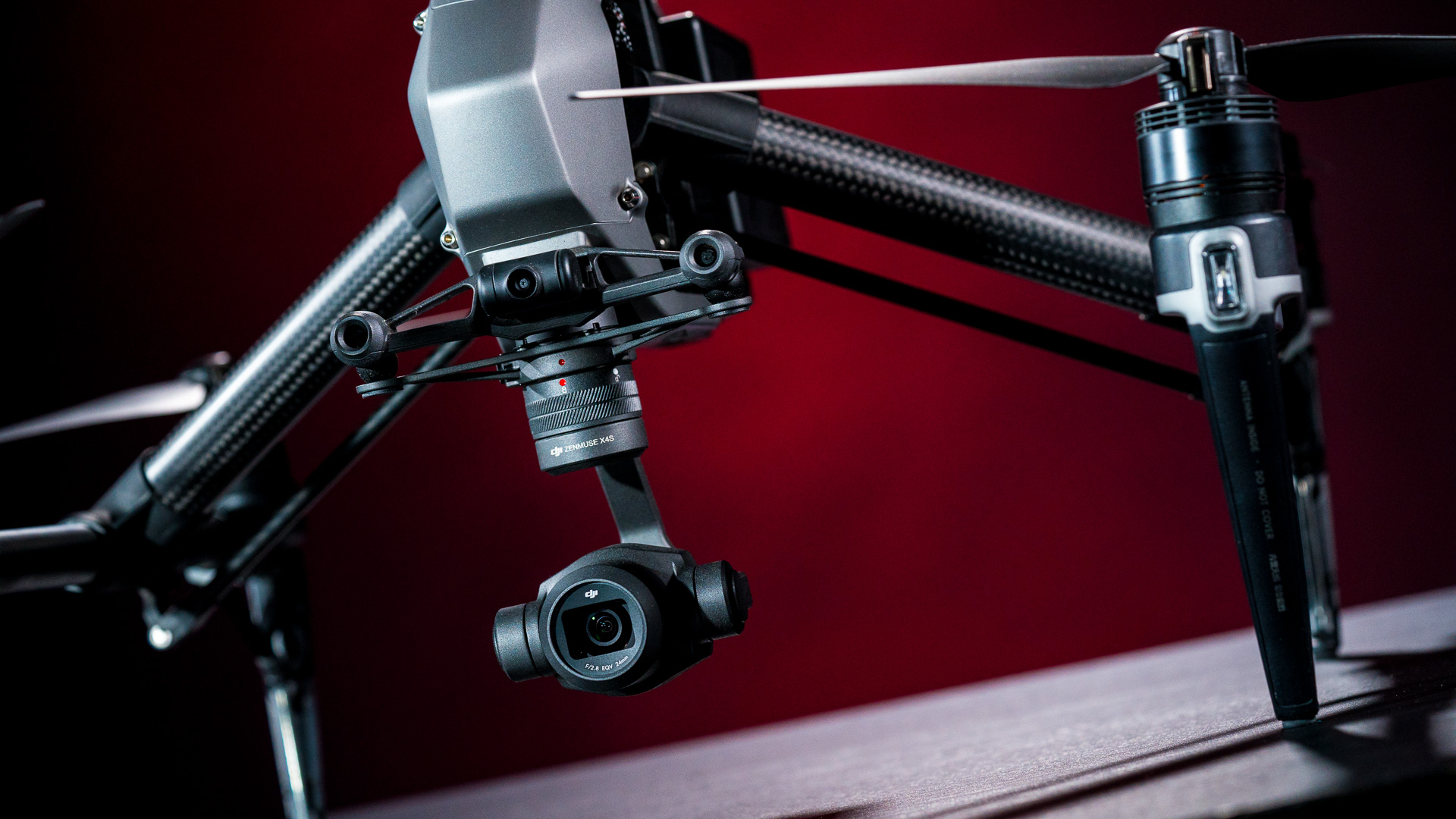
Upon revealing the drone, my eyes were met with selectively placed magnesium aluminum composite fairings, leaving some of the black inner elements exposed. The carbon fiber arms remain the same from the previous model, but the overall appearance is far meaner. The body looks like the head of an alien, in an almost eerie way. I can’t help but wonder if additional weight could have been saved by using all carbon fiber components on the shell, but the style is very sleek and gives an air of speed even at standstill with its aerodynamic lines.
When in Travel Mode, the drone body is vertically level with the motors in a “flat” layout. Clicking the power button five times brings the machine to life, lifting the body to allow clearance for the gimbal to be attached.
The Inspire 2 as a professional drone deviates from the consumer trend of shrinking physical size for portability. It is big. The takeoff weight is just less than nine pounds, and the diagonal size of the quadcopter is 24”. That includes the monster 15” props, which help to lift the bird and convert the 2kg of thrust per motor into movement.
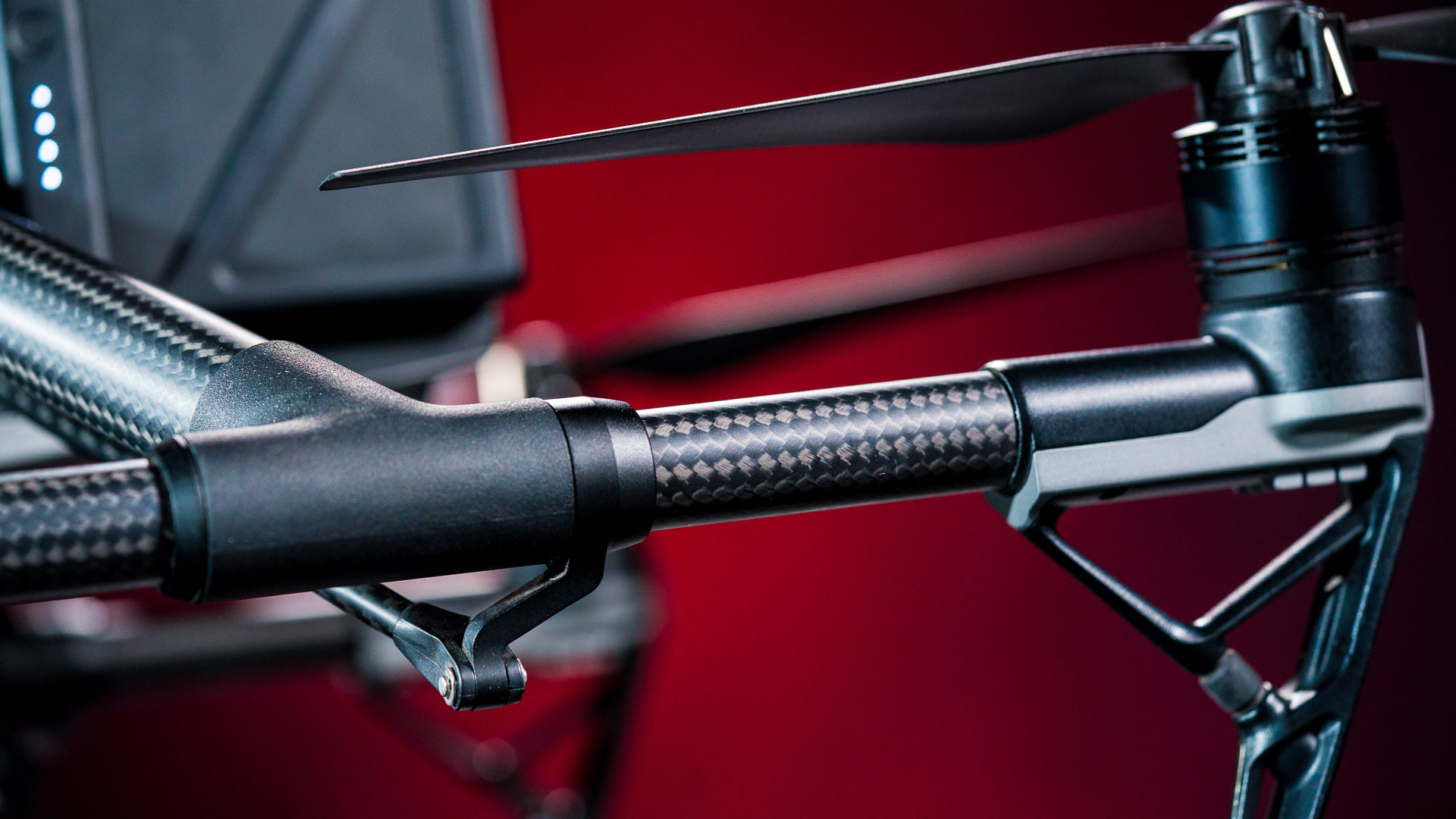
And move this thing does, to the tone of an impressive 0-50mph in five seconds. Despite the size of the quadcopter, the max speed is a blazing 58mph, and the ascent/descent speed is 6 m/s and 9m/s respectively. When the Inspire 2 was first announced, it was actually capping out at 67mph, with a 0-50mph time of four seconds. Somewhere in the presale journey DJI decided that was either too fast or reduced the battery life too quickly, so it got a slight bit tamer. Aerial maneuvering proved to be very responsive, and the Inspire’s ability to hold position steady in mild gusts of over 10mph was sound. Really, I would have expected nothing less from a professional drone that is designed with the cinematic mindset. Granted, pushing the Inspire 2 to max throttle does do some damage to the twin-battery setup, however with the X4S camera the flight time is a maximum of 27 minutes.
DJI Inspire 2 optics
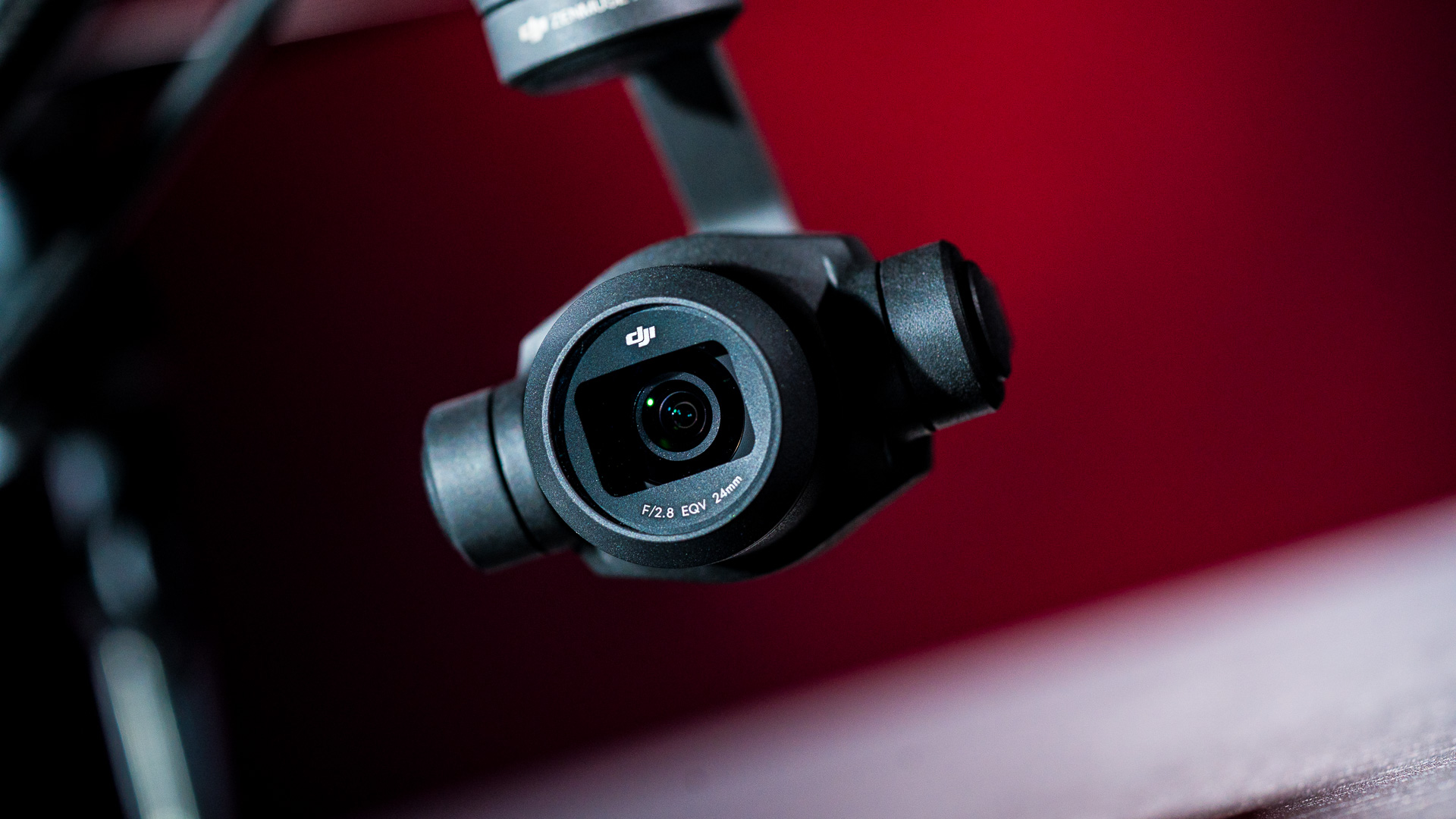
Undoubtedly the optics are the most important aspect of a drone used by Hollywood professionals, and in that regard DJI offers two options. The Zenmuse X4S camera packs a 1” sensor capable of snapping 20MP stills and 4K video at 60fps. The lens is an 8.8mm (24mm equivalent)/F2.8-11 with 11.6 stops, and has an 84° FOV which can capture 14fps continuous burst photos. The X4S camera and gimbal setup is reasonably compact, but the casing feels very rugged and durable unlike most others out there. With the X4S setup the price tag is around $3,600, and if you buy the Inspire 2 without any camera it is still a cool $3,000.
For the serious cinematographers looking to have a complete solution on the next level, the Zenmuse X5S camera is far more epic than any other professional drone camera. In addition to 4K recording, the X5S can shoot a ridiculous 5.2K at 30fps RAW, via the micro 4/3 sensor. For still-frames, the X5S can crank out 20.8MP with 12.8 stops at a slightly narrower 72° FOV, and 20fps continuous bursts if needed.
The X5S supports CinemaDNG and Apple ProRes for 5.2K, and H.264/H.265 video codec for 4K at 100Mbps by way of the onboard CineCore 2.0 image processing system. This high-end setup will cost a hefty $6,200, however the quality of the footage is truly epic as seen in this short film captured entirely on the DJI Inspire 2:
Of course, if a cinematographer is using a piece of equipment, chances are they want to get precise shots and don’t have the ability to focus on composition as well as piloting a drone. As a result, the Inspire 2 allows for dual piloting. A dedicated, dual-axis FPV camera remains dedicated to the master transmitter piloting the drone, while a slave remote can control the gimbal simultaneously.
Dual signal frequency allows pilots to switch between 2.4GHz and 5.8GHz via the Lightbridge connection, to cut through noise and have greater control over their signal stability. The real-time video feed is available in either 1080p or 720p for the full 4.3 mile range of the quad, and live broadcasting is even possible from the Inspire for news crews with a satellite truck.
Professional storage
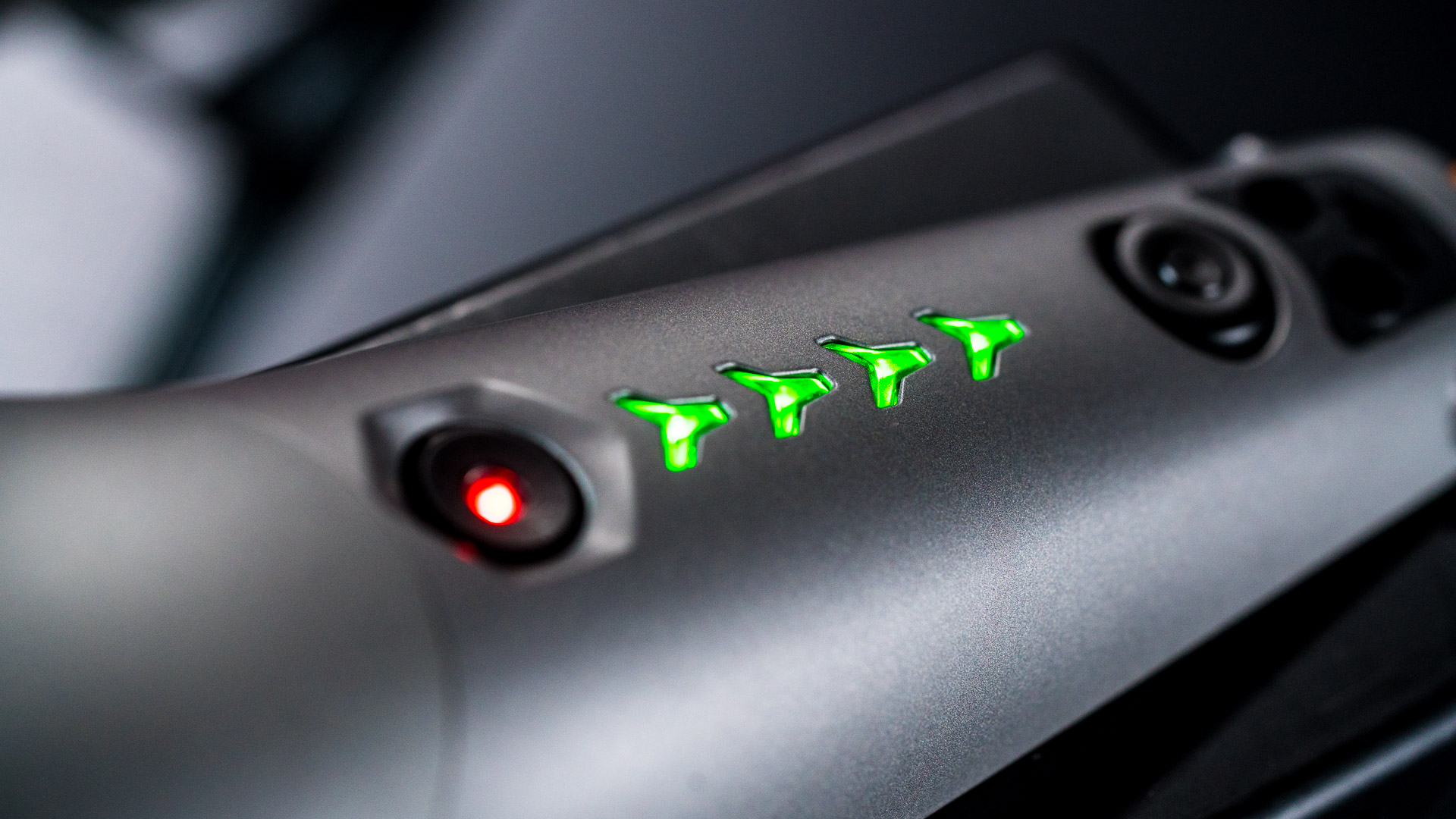
As with any DJI, footage is automatically stored in two locations—on the mobile device and the on-board MicroSD card. That’s great for most applications, except when shooting UHD on a movie set with a lot riding on getting the footage safely to the editing room. With stakes that high, extra precautions are in order. To that note, the Inspire 2 comes with its own DJI CINESSD slot with four PCI Express ports, and supports FAT32/exFAT file formats. No, that wasn’t a typo. This drone has an SSD.
Now unfortunately one can’t simply slap in a regular SSD drive, so those looking for the extra storage will need to pony up and get the DJI-specific ones($300 for 120GB or $899 for 480GB). It surely isn’t cheap, but for professional applications content security is paramount.
Aerial intelligence
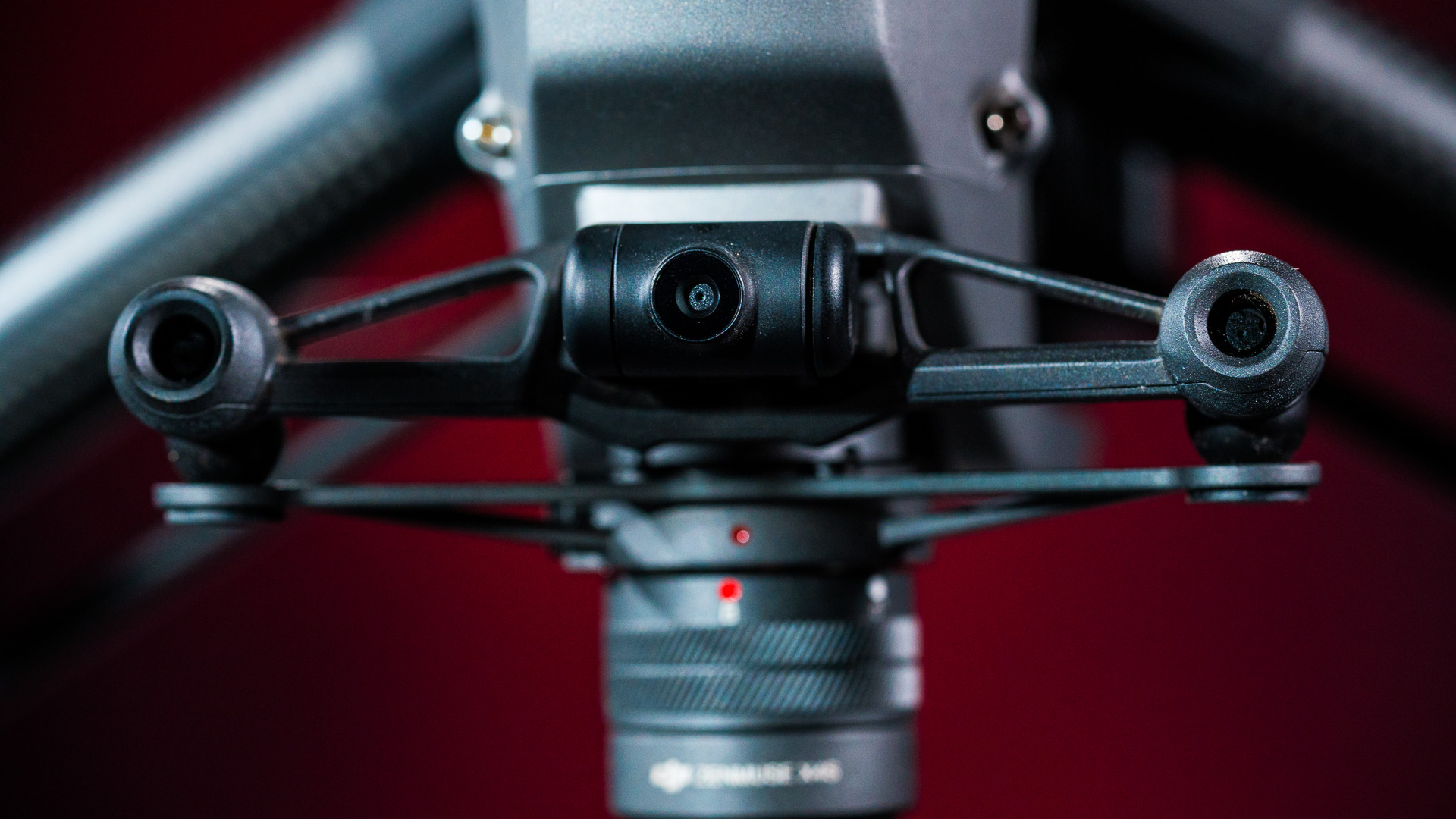
One of the trademarks that has previously set DJI apart from other drone manufacturers is their intelligent flight modes and spatial awareness, which have been pretty solid for the most part. The Inspire 2 is no different, and comes with dual forward obstacle avoidance sensors that can detect objects up to 30m away in normal circumstances, as well as dual infrared upward sensors that can detect up to 5m.
Dual downward-facing sonar and terrain detection sensors keep the descent path secure, which all equates to indoor stability. Now “indoor” is a relative term, and extreme caution should be taken when flying in an enclosed space at any time, however with a two-foot total wingspan this is definitely not something for the home. The obstacle avoidance can actually be disabled though, which does come in handy. In circumstances where piloting out in open spaces and traveling in the direction of the sun is unavoidable, sometimes the glare is incorrectly represented as a solid object and can interfere with fluid shots.
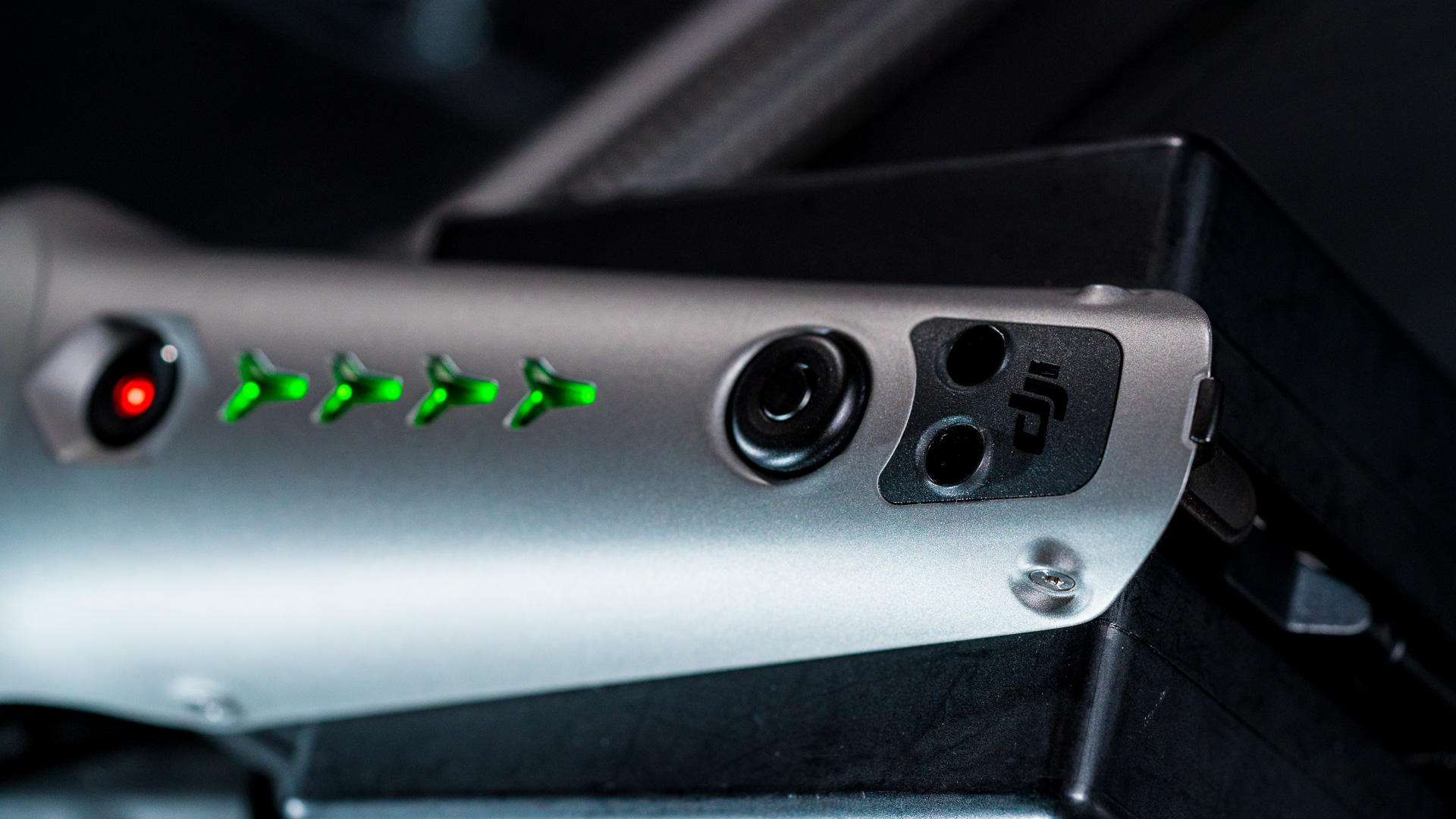
There is one brand-new intelligent flight mode that sticks out above the others for me, that is especially relevant to professional drone pilots and cinematographers. DJI calls it “Spotlight Pro”, and it makes the job of getting complex shots far easier for a single pilot/videographer setup. Basically, this mode uses visual tracking to lock the camera onto a subject while in-flight. Regardless of the direction the pilot maneuvers the drone; the camera will have constant focus on the object which allows the pilot to create complicated cinematic shots without having a separate cameraman.
There are a handful of other available intelligent flight modes on the Inspire 2, which help maintain the balance between pilot and cameraman:
- Profile Mode- The drone faces straight ahead, flying alongside the subject while the camera is locked on the object, still allowing for the obstacle avoidance to work effectively
- TapFly- Using the dedicated FPV camera, pilots can tap a point on the mobile screen to set a flight course, which allows the pilot to focus on gimbal control
- ActiveTrack- Recognizes objects (people, bikes, cars, boats and such) to lock onto them and follow both with the camera and drone itself for action shots on the go.
- Smart Return To Home- Forward and downward vision systems allow the Inspire 2 to create a real-time map of the flight course, giving it the ability to plot the shortest and safest return flight home in case of connectivity loss. In this mode, obstacle avoidance is enabled for up to 200m
- Quickspin- When the gimbal reaches its movement limit, this allows the Inspire 2 to spin clockwise or counterclockwise on the center axis of the gimbal to allow for greater flexibility in flight while filming.
- Tripod mode- The flight speed is limited and the stick controls are less responsive, which allows for a much smoother shot.
Buy DJI Inspire 2 Zenmuse X4S Camera Combo- $3,598
That’s a wrap
After playing with the DJI Inspire 2 for a little while, a few things became very clear. This is not a drone for the hobbyist by any means (if the price didn’t make that clear enough). The heavy-hitting optics are on the level of cinematic professionals in Hollywood, and the system redundancies have been structured to protect the content and device in any scenario.
While the inclusion of some similar DJI flight modes make it feel somewhat familiar, their purpose is to enable aerial videography that was previously handled by a camera crew on a helicopter, or even a serious mobile ground crew setup. The level of technological advancements put into the Inspire 2 is mind-blowing, and everything from the heated batteries for cold weather shoots to the multiple content formats in UHD enable the creative professional the unbridled opportunity to push their own limits. The only remaining question is; “What’s the next move for the professional drone market?”
Featured in this article:
DJI Inspire 2 drone without camera: $3,000
DJI Inspire 2 drone with X4S 4K camera: $3,598
